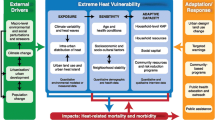Abstract
The United Nations has declared 2008 to be the International Year of Planet Earth. It is being organised under the auspices of the International Union of Geological Sciences and UNESCO. Planning for the International Year of Planet Earth has consisted of establishing 10 major science themes including Hazards. The Hazards Theme is centred around the following key questions: (1) How have humans altered the geosphere, the biosphere and the landscape, thereby creating long-term changes detrimental to life and the environment and triggering certain hazards, while increasing societal vulnerability to geophysical (geological and hydrometeorological) hazards? (2) What technologies and methodologies are required to assess the vulnerability of people and places to hazards and how might these be used at a variety of spatial scales? (3) How do geophysical hazards compare relative to each other regarding current capabilities for monitoring, prediction and mitigation and what can be done in the short-term to improve these capabilities (4) What barriers exist to the utilisation of risk and vulnerability information by governments (and other entities) for risk and vulnerability reduction policies and planning (including mitigation) from each of the geophysical hazards? Following the 26 December 2004 Indian Ocean Tsunami and the UN World Conference on Disaster Reduction held in Kobe, Japan in January 2005, the International Council for Science (ICSU) decided to establish a major research programme and initiative on Natural and Human Induced Environmental Hazards and Disasters that will co-operate with the Hazards theme of the International Year and continue through to 2011.



Similar content being viewed by others
Notes
References
Beer T, Ismail-Zadeh A (eds) (2003) Risk science and sustainability: science for reduction of risk and sustainable development for society. (NATO Science Series. Series II, Mathematics, Physics, and Chemistry; 112) Dordrecht: Kluwer Academic. xvi, 240 p
Marsh S, Paganini M, Missotten R (2004) IGOS Geohazards Theme Report, Integrated Global Observing System. Available from: http://dup.esrin.esa.it/files/project/131-176-149-30_20065218527.pdf
Standards Australia (2004) Standards New Zealand: Risk Management, AS/NZS 4360:2004 Standards Association of Australia, Sydney, NSW
Author information
Authors and Affiliations
Corresponding author
Rights and permissions
About this article
Cite this article
Beer, T. The Natural Hazards Theme of the International Year of Planet Earth. Nat Hazards 42, 469–480 (2007). https://doi.org/10.1007/s11069-006-9076-z
Received:
Accepted:
Published:
Issue Date:
DOI: https://doi.org/10.1007/s11069-006-9076-z




